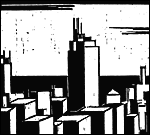Andy Grundberg, Crisis of the Real: Writings on Photography Since 1974 (Aperture, 1990) Reissued by Aperture in paperback in 1999. Andy Grundberg's Crisis of the Real is a collection of articles on photography he wrote for the New York Times – as well as several other publications – from 1974 to 1989. Grundberg's essays create a remarkably cohesive work. Through each piece runs a common thread: the notion that photography both reflects and helps shape the contemporary art world, that it changes the way we perceive reality, and that it has had a tremendous impact on the evolution of modern art. Grundberg reassesses the contribution of influential photographers and analyzes the evolving relationship between photography, the art world, and the media. A former photography critic for the New York Times as well as the curator of numerous photography exhibitions, Grundberg questions as much as he critiques, subverting conventional interpretations of photographic icons such as Ansel Adams, Walker Evans, and Richard Prince. Grundberg never succumbs to worshiping established greats. He seeks to place and understand each artist within the social and cultural context of his time, always weighing how relevant the works of each are to photography today. When writing about Ansel Adams, for instance, he refutes the commonly made claim that Adams pioneered straight photography. Adams, Grundberg writes, came on the scene too late to pioneer the style in which he worked. Grundberg perceives Adams as one of the last of the Romantic artists, whose way of representing the world through pristine, sharp images of virginal nature has become obsolete when describing today's world. Grundberg has organized his essays into six sections according to themes. The first is entirely devoted to a polemic on the relation of photography and art in a postmodern world. But ever the questioner, he spends a great deal of time exploring what postmodernism actually means. For Grundberg, postmodernism is above all a condition, in which reality, authentic experience, originality, and individual artistic vision have become obsolete. As Grundberg puts it, postmodern art tells us "that things have been used up, that we are at the end of the line, that we are all prisoners of what we see." Postmodern photography, then, is less about representation than about representations of representations, about symbols whose meaning can never truly be deciphered. Images don't reflect who we are and what we know as much as they comment on who we think we are and simultaneously shape how we understand ourselves. Following Grundberg's introductory essay is a section devoted to modernism, in which he discusses the contribution of photographers such as Edward Weston and Minor White. Next, Grundberg tackles photography's reflection of American culture and the American dream. By far the biggest chunk of the book discusses photography in the 1980s, the section in which, through the discussion of avant-garde photographers such as Cindy Sherman and Barbara Kruger, Grundberg explores the merging of the roles of postmodern photography and art. The final two sections – "Documentary Dilemmas" and "Photography at the End of the Millennium" – explore issues such as the decline of photojournalism and the role of photography in the age of television and video. Grundberg perceives television as a threat to photography's traditional role of capturing and preserving a single telling moment. Can photography, as a journalistic medium, still render memorable images? Grundberg argues that today still images function only to confirm what we have already seen. Photography has relinquished to television its role of evoking strong emotional responses. Grundberg's vision of the future of photography may be bleak, but his discussion of photography's changing role and evolving relationship to the art world is both exhilarating and intellectually stimulating. Crisis of the Real was well received by many if not all critics when it was first published. Grundberg's essays challenge and provoke, often upsetting the conventional understanding of photography's role and influence. As one critic writes, "Agree with them or not, Andy Grundberg's provocative critical opinions invariably make one think hard about art and photography." Black-and-white photographs accompany the text. The 1999 edition includes several of Grundberg's more recent articles, written in the 1990s. MORE: One of Grundberg's Curator's Statements Billings Outpost Review of a Grundberg Exhibit |
 |
|||||||||||||||||||||||||||